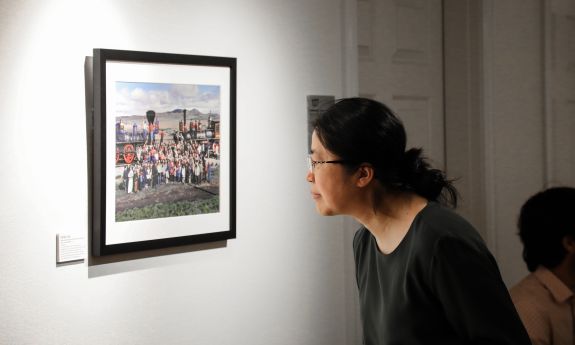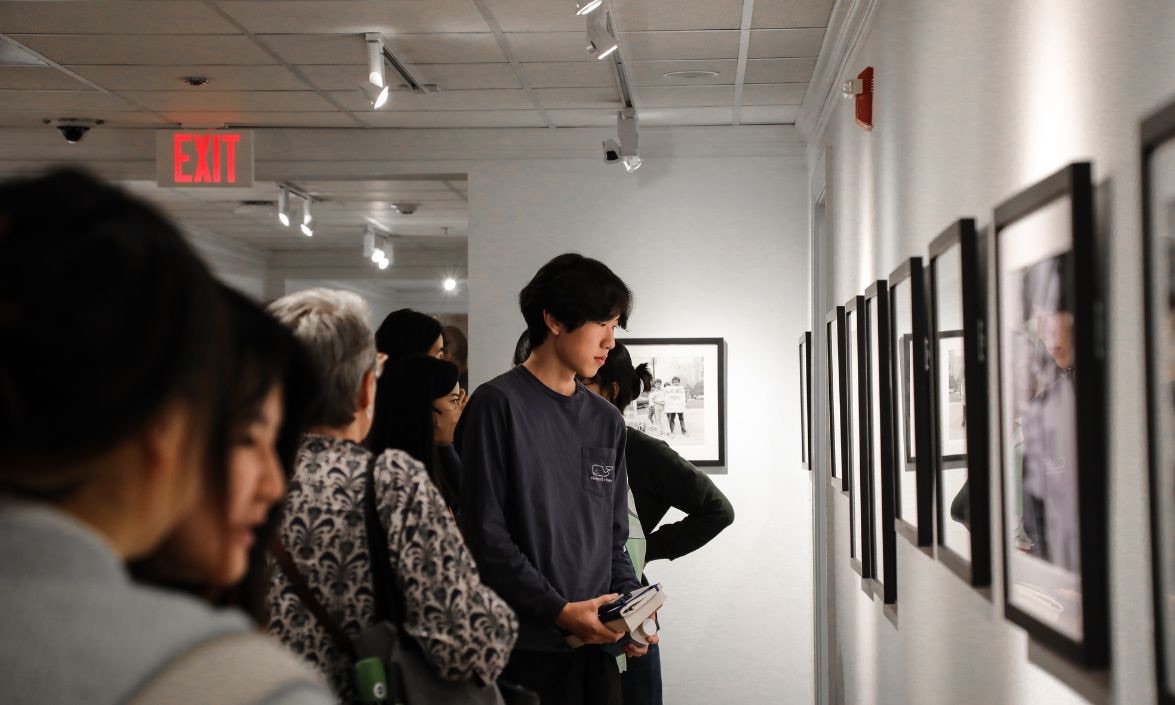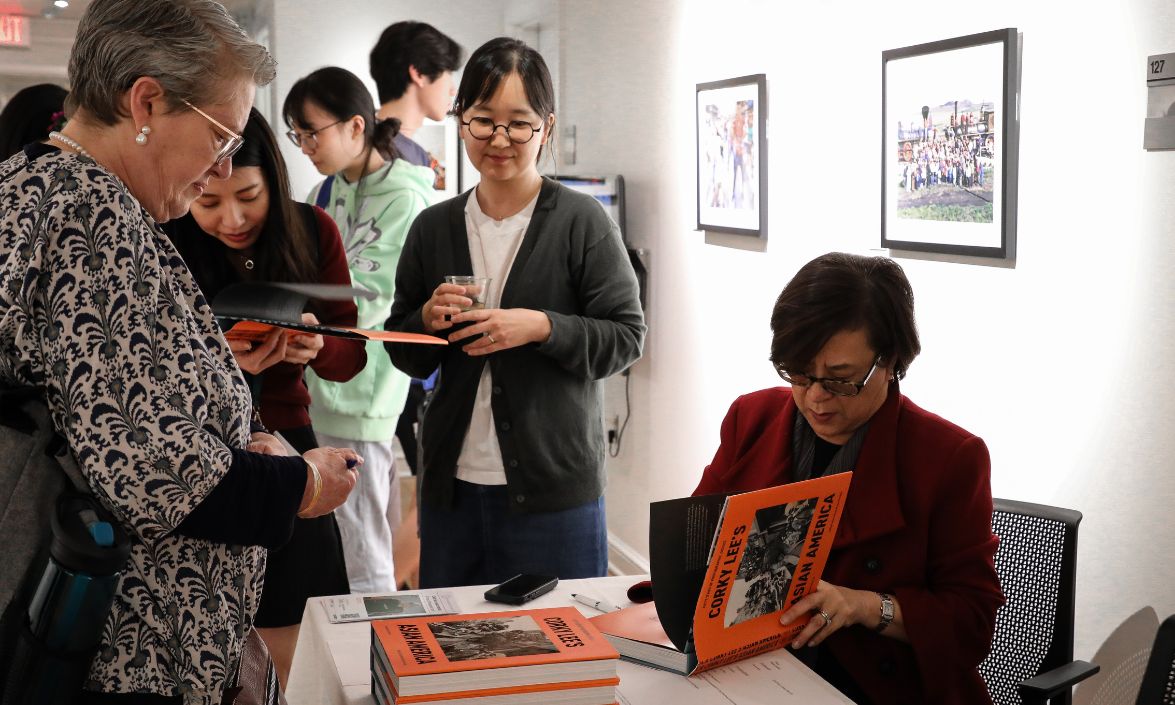Corky Lee, Leading Asian American Photographer, Featured in New Exhibit

One of the most engaging anecdotes Ngai related was how Lee once scooped every other major newspaper by sprinting over 20 city blocks to deliver a compelling photo he captured. The stark, raw image depicted the violent suppression of an activist protesting the police beating of Peter Yew, also an activist. Somehow, Lee found time (and a darkroom) to develop the film along the way, and the print ran on the front page of that evening’s edition of the NY Post, launching Lee’s career as a journalistic photographer.
An example of Lee’s style can be seen in his 2001 photograph of Sikh community members wrapped in American flags at a post-9/11 event in New York’s Central Park. The photo highlighted both their country of residence and cultural heritage. This dualism, Ngai explained, is part of Lee’s visual signature.


Lee was committed to showcasing Asian American participation in all aspects of American history. This led him to recreate Andrew J. Russell’s print celebrating the completion of the transcontinental railroad. Lee had invited more than 100 Chinese Americans to appear in the photograph, including many descendants of the original railroad workers.
Lee had begun curating selections from more than 800,000 of his photographs. Unfortunately, he was unable to realize this goal before he died in early 2021 from complications related to COVID-19. His selections were the basis of the prints that appear in “Corky Lee’s Asian America: 50 Years of Photographic Justice.”
Thanks to Lee’s tireless efforts to document Asian American lives, we can appreciate the complexity and vitality of this community. As Duke celebrates Asian American and Pacific Islander Heritage Month ahead of the national event in May, it is fitting that this exhibition is part of the commemoration.